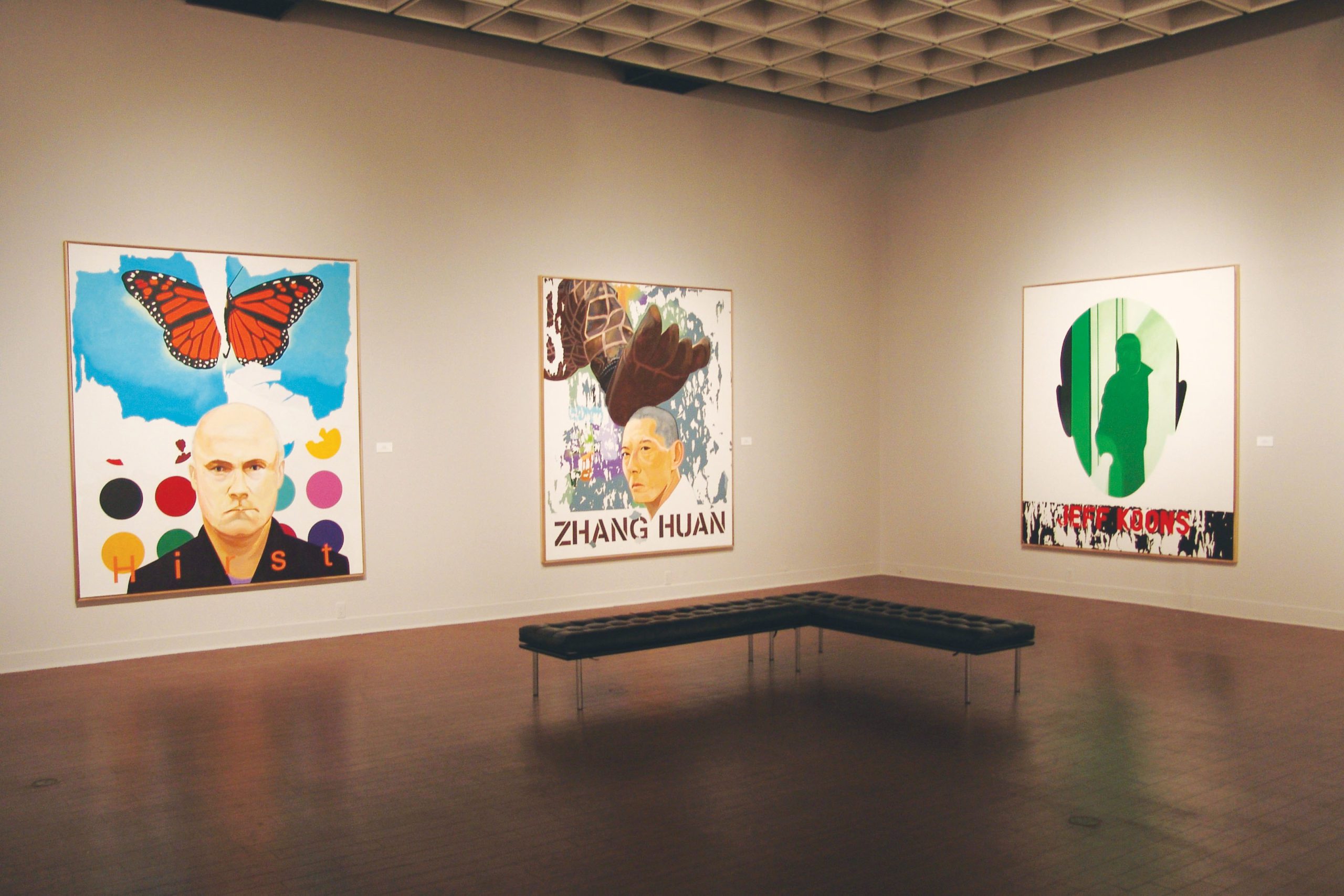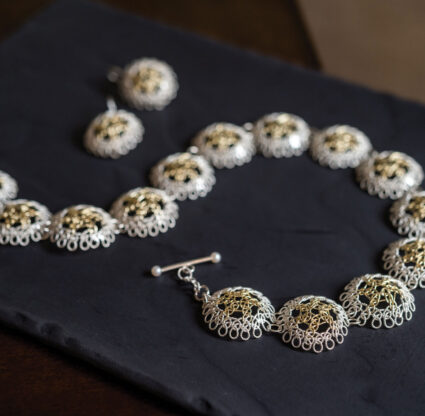It used to be that you could count on area colleges to deliver two subpar performances of The Mikado and a student-faculty photography exhibit featuring an inordinate about of black-and-white fallen leaves. To attend either meant one of two things: You were giving someone in the cast a ride home or you had an unnatural fondness for Triscuits topped with American cheese.
But as Jacob Dylan’s dad used to say, “The times, they are a-changin’.” We’re lucky to have three universities in Southwest Florida that offer residents the chance to partake in their arts and cultural events as if you were a 20-year-old coed happily experimenting with the “special” brownies. After all, there’s not much that can compare to the raw excitement and naïf wonderment of art on campus.
Florida SouthWestern State College
Florida SouthWestern State College is the granddaddy of the region’s art scene thanks largely to The Bob Rauschenberg Gallery. Founded in 1979 as The Gallery of Fine Arts at Edison Community College, it was the first guarded and climate-controlled gallery space in Southwest Florida, according to Jade Dellinger, the college’s director of exhibitions and collections. Rauschenberg, who moved to the area in 1970, eventually did 15 exhibitions there. “He really used it as a laboratory for his work,” Dellinger says.
Over the years, it has brought big-time art to little Southwest Florida. Everyone from Yoko Ono to Wayne White has exhibited and interacted with students here. The current exhibit (through Feb. 6) is Keith Edmier: Edison Impluvium, a site-specific, full-scale sculptural recreation of the historic 1910 concrete swimming pool located at the Edison-Ford Winter Estates. The exhibit also features a first—Edison’s full-head plaster cast death mask.
When visitors enter the interior walls of the “pool” (there’s no water), they are greeted by 50 original life masks, most created by Edmier. Some of those masks include celebrities such as Farrah Fawcett and David Bowie. Edmier describes the installation as a reimagined ancient ruin that references both the Roman Republic-era idea of life casts as ancestral masks and the impluviums (water basins) found in the atriums of houses in Pompeii.
Ave Maria University
As the new kid on the block, it’s understandable that Ave Maria University doesn’t have some of the in-depth art programs of some other campuses. A $15 million performing arts center being championed by art crusader Myra Daniels is still in the fundraising stages and won’t open its doors for at least another two years. But even so, the university does have a few unique opportunities for the public to experience its take on cultural offerings.
Though you can always visit the university’s Mother Teresa Museum (motherteresaproject.org), the school offers a very distinctive theatrical performance in April that plays to sold-out houses. Shakespeare in Performance is a course that requires students to put on one Shakespeare play. That might not be newsworthy, but the fact that Ave Maria has no theater department or drama club means it currently has no dedicated stage. Instead, the students perform in an oversized classroom that has been cleared of desks and lined with chairs. This year, Director of Humanities and Liberal Studies and Associate Professor of Humanities and Literature Travis Curtright has his students working on The Winter’s Tale—the original dramedy.
“We use period costuming, but rather than elaborate sets or props, we invite the audience to co-create the imaginative presence with us,” Curtright says. “We break the fourth wall.”
The performance is a full-length production, replete with breathing statues, ghosts and Shakespeare’s infamous “Exit, pursued by bear.” It also incorporates live music (often contemporary) into the play, just like Shakespeare did at the Globe (although he used Eurythmics a bit more sparingly). The show is scheduled for April 7-10, 14-17 and 21-23. Tickets are free but on a first-come first-served basis and are usually gone by the end of January. Check out shakespeareinperformance.net for more information.
Florida Gulf Coast University
If you’re looking to experience local college theater on a stage, FGCU is delivering two clever options this season. First up is the comedy The Mansion at Hangman’s Bog, written and directed by professor of theater Barry Cavin, running Feb. 19-21 and 26-28 at TheatreLab in the Arts Complex. A mysterious mansion in Northeast Georgia is maintained by the National Park Service for grad students conducting specialized research, but a clerical error traps several cryptozoological researchers together fighting for their lives against their own research subjects. Next up is The 39 Steps, running April 8-10 and 15-17. The play based primarily on Alfred Hitchcock’s 1935 film of the same name is to be performed by just four actors, requiring quick changes and often actors to play multiple characters at once, taking it from serious spy thriller to hilarious disaster.
If loitering is more your thing, FGCU’s Main Gallery features several very promising exhibits starting with a solo exhibition by artist Roger Chamieh entitled Borborygmus: Or Beware The 3-Fingered Mouse Without A Soul through Feb. 25. Chamieh expresses himself through visual metaphors that incorporate sounds, video and kinetics. His piece Broken, featuring found objects, laminated plywood, latex rubber and audio, is equal parts Whoville stereo store and colonoscopy gone wrong. And if that doesn’t make you want to go to this exhibit, nothing will. Another exhibit that highlights the power of the collaborative environments of college campuses is the Michael Massaro show, as part of the school’s Crossroads of Art and Science Residency, Feb. 11 (opening reception 5-7 p.m. Feb. 11) through March 17. Massaro has been invited to think and work alongside the science faculty at FGCU’s Vester Marine and Environmental Science Research Station in an effort to examine the relationship between art and science. Imagine if Picasso had a Red Tide Period.
As for music, FGCU has some great options coming up this season at the Bower School of Music & the Arts. The Amernet String Quartet with pianist Michael Baron performs Jan. 10; acclaimed baritoine Zheng Zhou from the Shanghai Conservatory, Jan. 21; pianist Paul Barnes performs New Generations: Piano Music of Living Composers Feb. 4; 13-year-old piano sensation Maxim Lando, Feb. 18.
Check out fgcu.edu/CAS/BSMA for more information.





